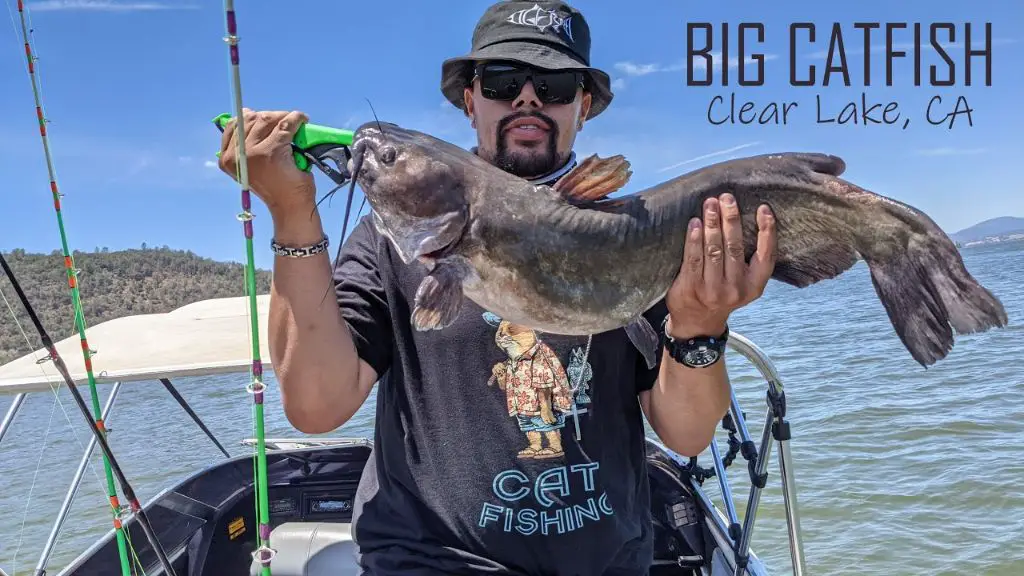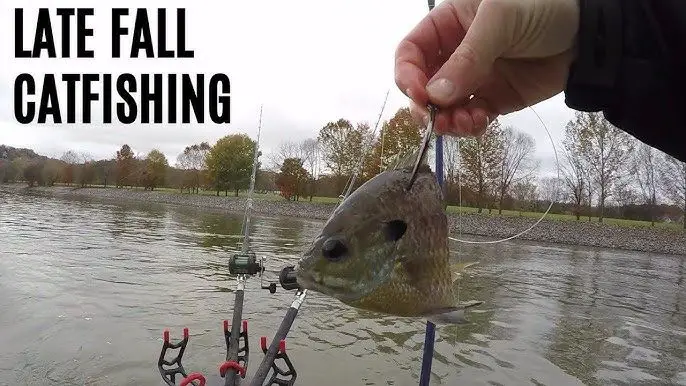Catfish fishing is a popular pastime for many anglers in California. The state offers excellent opportunities to catch channel catfish, white catfish, blue catfish, and flathead catfish in lakes, rivers, reservoirs, and ponds. However, to ensure healthy and sustainable catfish populations, the California Department of Fish and Wildlife regulates catfish fishing with daily limits, size restrictions, and seasonal closures.
This article provides an overview of the catfish fishing regulations for recreational anglers in California. Understanding the rules for daily limits, legal sizes, and open seasons is crucial for following the law and practicing ethical angling. We will explain why regulations exist, how limits are set, and who enforces the catfish fishing laws in California. With insight into the regulations, anglers can plan successful trips while protecting catfish populations.
Background on Catfish in CA
Catfish are not native to California. The first catfish introduced to the state were Channel Catfish, which were brought from the Mississippi River region in 1874 (Source: https://www.waterboards.ca.gov/water_issues/programs/tmdl/records/state_board/2006/ref329.pdf). Other catfish species soon followed, including Blue Catfish, White Catfish, Black Bullheads, Brown Bullheads, and Flathead Catfish.

Of these, the Channel Catfish and Blue Catfish have thrived the most in California. Blue Catfish in particular can grow to massive sizes, with the state record being a 113 lb 5 oz fish caught in Lake Isabella in 1991 (Source: https://a-z-animals.com/blog/wow-the-largest-blue-catfish-ever-caught-in-california/). They are now well-established across many waterways in Central and Southern California.
Catfish Biology
There are several species of catfish found in California, including channel catfish, white catfish, brown bullheads, and flathead catfish. Channel catfish (https://oehha.ca.gov/fish/species/catfish-species) are the most common, with an elongated body, deeply forked tail, barbels around the mouth, and olive to slate blue coloring on the back. They can reach up to 40 inches long and weigh over 20 pounds. Channel catfish are opportunistic feeders, eating insects, crustaceans, baitfish and plant matter. They prefer warm, slow-moving waters with soft bottoms.
White catfish (https://oehha.ca.gov/fish/species/catfish-species) have light gray or silver coloring on their back and sides with white undersides. They have a stout body shape and can grow over 30 inches long. White catfish feed on insects, crayfish, clams and plants. They are found in lakes, ponds, rivers and streams statewide.
Bullheads are smaller catfish, around 12 inches long on average. Brown bullheads (https://oehha.ca.gov/fish/species/catfish-species) have yellow to brown coloring on top and lighter undersides. They eat insects, crustaceans, small fish and plant matter. Bullheads prefer warm, weedy ponds, lakes and backwaters.
Flathead catfish can exceed 50 pounds in California. They have a broad, flat head and protruding lower jaw. Flatheads are opportunistic predators, eating live fish, crayfish, frogs and other prey. They prefer large rivers with deep pools and areas of cover.
Fishing Regulations for Catfish in California
In California, there are specific fishing regulations that apply to catching catfish. According to the California Freshwater Sport Fishing Regulations, the daily bag limit for catfish is 10. This limit applies to all species of catfish, including channel catfish, white catfish, blue catfish, and flathead catfish.
There is no minimum size limit for keeping catfish in California. Anglers can keep any size catfish as long as they stay within the daily bag limit.
In terms of gear restrictions, up to 12 hooks may be used when fishing for catfish. Dip nets, cast nets, hook-and-line gear are all legal methods for catching catfish. However, catfish may not be taken by snagging, snaring, or bow and arrow fishing. It is also illegal to use explosives, chemicals, electricity, or stupefying substances to take catfish in California.
These regulations are designed to allow catfish anglers to catch and keep a moderate number of catfish per day, while also preventing overfishing of catfish populations. The daily limit helps conserve catfish numbers and ensures the fishery remains sustainable.
Why Limits Exist
Fishing limits and regulations serve an important purpose in managing fish populations and promoting sustainability. As stated by the North Carolina Department of Environmental Quality, “Size limits are meant to protect fish of spawning size before they are caught. Fishing seasons protect fish during spawning and limit the catch on heavily fished species.”1 Without limits, popular game fish could easily be overfished, damaging populations and the overall ecosystem.
Limits help ensure there are enough adult fish that can reproduce and maintain healthy numbers over time. They also spread out fishing pressure more evenly throughout the year. Seasonal closures allow fish to spawn without too much disturbance and mortality. And bag and size regulations prevent anglers from taking home excessive catches before fish reach maturity.
Overfishing and declining stocks used to be a huge issue before modern management. Now with science-based limits and better monitoring, fishery managers can pinpoint appropriate bag limits, sizes, and seasons. While anglers may be restricted in their catch, the long-term benefit is sustaining catfish populations so everyone can enjoy the sport year after year.
Enforcement
The California Department of Fish and Wildlife is responsible for enforcing fishing regulations and limits in the state. Game wardens and other law enforcement officers regularly patrol popular fishing areas and conduct checks to ensure anglers are following the rules.

According to the California Freshwater Sport Fishing Regulations, penalties for violating fishing limits and other regulations can include fines, seizure of fish and equipment, and even jail time. Fines generally start at $100 for a first offense but can go up to $1,000. Willful or repeated violations carry even stiffer penalties and potential jail time.
The regulations state that “any person who violates any provision of these regulations is guilty of a misdemeanor” and violations must be prosecuted within 3 years. So anglers who keep undersized fish, exceed their limit, or break other rules may face citations and legal consequences.
Overall, following the catfish limits and other fishing regulations is important not just for conservation but to avoid potentially expensive penalties. Anglers should be sure they know and follow the rules.
Popular Catfish Spots
California has many excellent lakes and rivers for catching catfish.
According to this source, some of the best catfish fishing spots in California include:
- The Sacramento-San Joaquin River Delta – Open waterways and sloughs in the delta provide excellent catfish habitat. Channel and white catfish are common.
- Lake Isabella – This large reservoir in the southern Sierras contains good populations of channel catfish up to 15 lbs.
- Eastman Lake – Located near Chowchilla, Eastman Lake is a top spot for fat channel catfish exceeding 20 lbs.
- Lake Skinner – A consistent producer of blue, channel, and flathead catfish weighing up to 30 lbs.
The California Delta is especially noteworthy, hosting impressive channel cats along with white catfish, bullheads, and other species. Its many sloughs, rivers, and flooded islands offer endless fishing opportunities.
Look for areas with slower currents, structure, and underwater vegetation to find concentrations of catfish waiting to be caught.
Catfish Fishing Tips

When fishing for catfish in California, using the right bait and techniques can make a big difference in your success. Some of the best baits for catching catfish include nightcrawlers, chicken livers, cut bait like shad or anchovies, and stink baits like dip baits or dough baits. You’ll want to target areas like creek channels, pond dams, and lake ledges where catfish tend to congregate.
The best techniques for catching catfish include drifting with the current, slow trolling, still fishing on the bottom, or using a slip bobber rig. Focus on getting your bait right on the bottom using just enough weight to keep it down. You can tip your baits or spray them with attractants like blood or fish oils to make them extra enticing. Good catfish rods have a limber tip to detect subtle bites but enough backbone to haul in big fish. Use circle hooks to hook more fish that nibble at the bait.
Some key catfish fishing gear includes:
- Medium to medium-heavy rod 7-8 feet long
- Baitcast or spinning reel with smooth drag
- 15-30 lb test monofilament or braided line
- 3/0-5/0 circle hooks
- Slip sinker or egg sinkers
- Pliers for removing hooks
- Stringer or livewell to keep fish fresh
By using the proper techniques and gear, you can maximize your chances of hooking into some monster catfish in California!
Eating Catfish
Catfish is a popular fish for eating in California, known for its mild, sweet flavor. When preparing catfish to eat, it’s important to know how to properly clean and cook it. Here are some tips:
Cleaning Catfish

Before cooking catfish, you’ll need to clean it thoroughly to remove any impurities:
- Use pliers to remove the sharp dorsal and pectoral fins.
- Cut off the head and tail with a sharp knife or kitchen shears.
- Peel off the skin by gripping it with a paper towel and pulling firmly.
- Slice down the belly and remove the innards, being careful not to rupture the gallbladder, which can impart bitterness.
- Rinse the fish thoroughly under cold running water.
Cooking Catfish
There are many delicious ways to cook catfish including:
- Frying – coat in flour, cornmeal, or breadcrumbs and pan fry in oil.
- Baking – brush with oil or butter and bake at 400°F until fish flakes easily with a fork.
- Grilling – baste with barbecue sauce and grill over medium-high heat for 4-6 minutes per side.
- Blackening – coat with Cajun spice mix and cook in a hot cast iron skillet.
- Steaming – place fish in a steamer basket and steam for 8-10 minutes.
Make sure not to overcook catfish. It’s done when it flakes apart when poked with a fork and is opaque throughout. Enjoy!
Conclusion
In summary, California has stringent regulations on catching catfish to ensure healthy populations and sustainable fishing practices. The daily bag limit for catfish is typically 5 fish, with some exceptions for special fishing areas. These limits were created based on biological assessments of catfish populations and aim to allow enjoyment of the sport while preventing overfishing. Limits may vary by location and type of catfish, so it’s important anglers check the current regulations. While the limits may seem strict, they help preserve catfish numbers so generations of anglers can continue pursuing trophy catfish in California’s abundant waters.
Understanding the regulations and adhering to daily limits allows anglers to enjoy the thrill of catfishing while maintaining ecological balance. With some preparation and knowledge of the rules, catfishing in California can provide world-class action on hard-fighting fish within a well-managed fishery.

